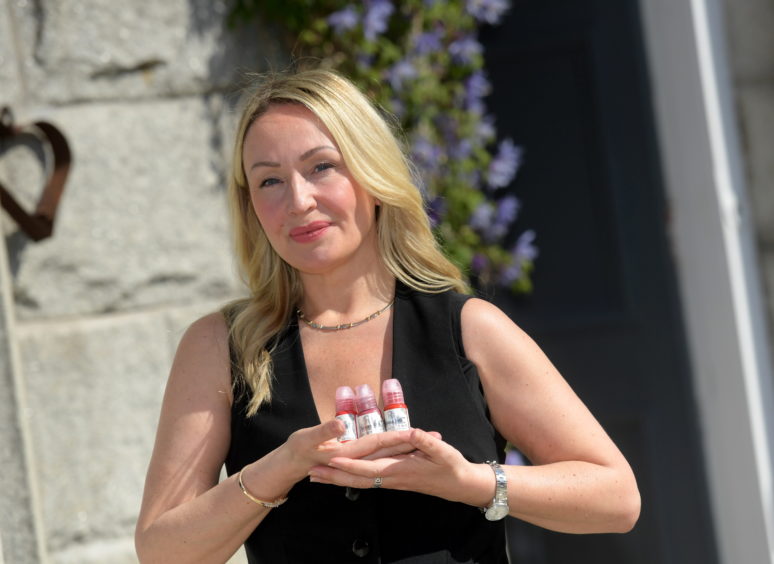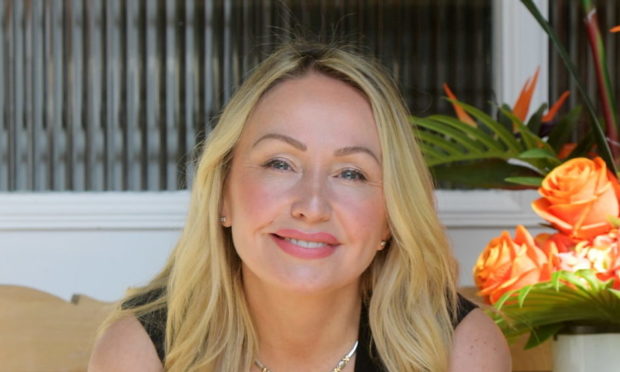Angela Bowyer carefully selects her tools, her hand perfectly steady as she gets to work.
The minutes tick by as her client dozes off, oblivious to the fine details which Angela is gradually bringing to life.
The numbing cream has clearly done the trick, each stroke of the needle goes unnoticed – which is perhaps just as well given the circumstances.
Angela steps back to admire her handiwork and gently wakes her customer; she says it’s not uncommon for people to fall asleep due to the white noise created by the digital machine.
A mirror is dutifully handed over, followed by a gasp; or what Angela describes as one of the most rewarding aspects of her career.
Sometimes there are even tears, when the client can’t quite believe their reflection.
They may have spent decades attempting to remedy the problem themselves, be that through the painstaking application of make-up or a creative fringe.
Angela is a permanent-make-up artist, and treats people from her home at Hamilton Place in Aberdeen.

The mum-of-two has been in the profession for five years, having given up her job as a pupil support learning assistant to go to study at a renowned academy in London.
From helping people to cover up scarring, to those faced with hair loss due to chemotherapy or alopecia, Angela treats a wide range of predominately female clients.
She specialises in brows, and although getting your eyebrows tattooed on might seem a frivolous act of vanity, it is anything but.
Women may struggle with their eyebrows for numerous reasons, be that permanent hair loss or naturally sparse brows.
The result can be a drastic blow to confidence.
With some clients in their 90s, there is clearly no upper age limit when it comes to finally getting the problem dealt with.
Angela also helps women impacted by breast cancer, with patients referred via the NHS for areola tattoos.
She is hoping to set up an organisation to enable more women to benefit from the service.
Here, she explains what she loves about her job, and how it has enabled her to create an amazing community.
I’ve always liked art, but I was actually working in a school before I became a permanent-make-up artist.
My passion started around 15 years ago.
I didn’t really have eyebrows, I’m blonde so the hair grew very fair. I had them tattooed by Jillian Sharp, she’s a veteran in the industry.
It inspired me, I realised that’s what I wanted to do.
Once my kids were older, I couldn’t turn the opportunity down. So I went to an academy in London and the rest is history.
There’s a difference between this kind of tattoo, and getting a sleeve done, for example. The pigments are different; you aren’t allowed to use permanent pigments, unlike a tattoo artist.
I have seen women desperate to have their brows fixed, because they’ve had permanent ink on their brows from a tattoo. It sits there forever and goes a really weird colour.
I don’t actually have any tattoos at all. I think they look amazing at first; the colours fade after five years and don’t look quite so good.
It’s a long process, around two hours’ worth. I’m essentially slicing someone’s face open.
The stories that get exchanged are incredible. My oldest lady was 93, she was driven in from her care home.
She was fit as a fiddle, she had some fascinating stories to tell.
There was a helicopter pilot, she was awesome. You never know who you will end up chatting with.
There is a mixture of whys and whos which dictates who books to see me.
People who are busy in their career, they want to wake up with make-up.
People who have alopecia, cancer patients whose brows have never grown back. Or people whose eyesight is failing, so applying make-up can be difficult.
There’s also a medical aspect. I do areola replacement treatment. That’s a very emotional aspect to the job.
It is no longer make-up, it is an essential in getting someone’s life back together.
Then there’s cleft lip replacement therapy, where I can create symmetry.
It’s hugely satisfying when I can help someone.
Occasionally we get what I call a guy-liner appointment, a man getting eyeliner or an eyelash enhancement.
It’s such a niche industry, it’s all word of mouth.
You need to find the right artist who suits your vision.
Everyone’s eyebrows should be different, because the end of the brow follows the skull.
I put numbing cream on for 20 minutes, then I sterilise the skin. Next I draw the brow on; both parties OK the design. Then I start the cutting process, known as micro-pigmentation.
Changing someone’s face is a big responsibility, you have to make sure they are ready and committed.
Getting tattooed might not sound the most relaxing process, but it is.
Generally, clients fall asleep in the procedure because of the hum of the machine.
Honestly, I couldn’t imagine a better way of spending my time.
